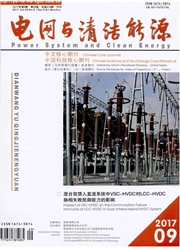

 中文摘要:
中文摘要:
介绍了几种工程上常用的测量大地土壤电阻率的方法,包括电流注入法、电位拟合法和电磁耦合法,给出各种测量方法的基本原理或布置图。通过公式推导,揭示了几种电流注入法(包括温纳排列、库勒伯格排列和不等距四极布置)之间的联系和区别,并对文中所提及的各种测量方法的适用范围和特点进行比较。通过比较,结合特高压直流输电工程中接地极设计的实际要求,提出大地电磁测深法(MT法)在特高压直流接地极设计中的优势和应用前景。
 英文摘要:
英文摘要:
This paper introduces several common meas-urement methods of soil resistivity, including the electricity injection (EI)method,the potential distribution fitting method and the electromagnetism(EM)method,and presents the basic principle or the arrangement figure of each method. Through the formula derivation, the paper reveals the similarities and differences among these methods. The application ranges and characteristics of all the methods are compared. And based on this comparison,the advantages and prospect of the MT method in the ultra high voltage direct current transmission(UHVDC) system is proposed .
 同期刊论文项目
同期刊论文项目
 同项目期刊论文
同项目期刊论文
 期刊信息
期刊信息
